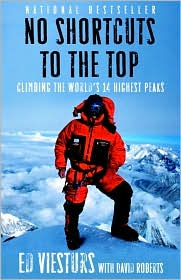Bonebeds: Genesis, Analysis, and Paleobiological Significance

by Raymond R. Rogers (Editor), David A. Eberth (Editor), Anthony R. Fiorillo (Editor)
Synopsis: The vertebrate fossil record extends back more than 500 million years, and bonebeds—localized concentrations of the skeletal remains of vertebrate animals—help unlock the secrets of this long history. Often spectacularly preserved, bonebeds—both modern and ancient—can reveal more about life histories, ecological associations, and preservation patterns than any single skeleton or bone. For this reason, bonebeds are frequently studied by paleobiologists, geologists, and archeologists seeking to piece together the vertebrate record. Thirteen respected researchers combine their experiences in Bonebeds, providing readers with workable definitions, theoretical frameworks, and a compendium of modern techniques in bonebed data collection and analysis. By addressing the historical, theoretical, and practical aspects of bonebed research, this edited volume—the first of its kind—provides the background and methods that students and professionals need to explore and understand these fantastic records of ancient life and death.
So far I am really enjoying this book. The book is very well laid out, easy to read and very informative. I have seen many things in it that I plan to work into a project this summer! I was disappointed to find that the supplemental material does not appear to be available on the University of Chicago Press website anymore however (which I brought to the attention of one of the editors, hopefully this will be fixed). And there are a few papers that are not included in the Bonebed Database in the middle of the book (which, other than those absences, is wonderful to have in one place). Has anyone else read this one yet (Brian, weren't you making it through this one)?
No Shortcuts to the Top: Climbing the World's 14 Highest Peaks

by Ed Viesturs, with David Roberts
Synopsis: For eighteen years Ed Viesturs pursued climbing’s holy grail: to stand atop the world’s fourteen 8,000-meter peaks, without the aid of bottled oxygen. But No Shortcuts to the Top is as much about the man who would become the first American to achieve that goal as it is about his stunning quest. As Viesturs recounts the stories of his most harrowing climbs, he reveals a man torn between the flat, safe world he and his loved ones share and the majestic and deadly places where only he can go. A preternaturally cautious climber who once turned back 300 feet from the top of Everest but who would not shrink from a peak (Annapurna) known to claim the life of one climber for every two who reached its summit, Viesturs lives by an unyielding motto, “Reaching the summit is optional. Getting down is mandatory.” It is with this philosophy that he vividly describes fatal errors in judgment made by his fellow climbers as well as a few of his own close calls and gallant rescues. And, for the first time, he details his own pivotal and heroic role in the 1996 Everest disaster made famous in Jon Krakauer's Into Thin Air. In addition to the raw excitement of Viesturs’s odyssey, No Shortcuts to the Top is leavened with many funny moments revealing the camaraderie between climbers. It is more than the first full account of one of the staggering accomplishments of our time; it is a portrait of a brave and devoted family man and his beliefs that shaped this most perilous and magnificent pursuit.
I am sort of a armchair mountain climbing junkie. I even climbed my first peak over 14,000 feet this past summer!! I was thrilled to read that Viesturs climbs like me - he takes his time, looks for land marks, and just plods forward (made me feel less freak-like). He is not to proud to say he can't go any further if that is the case (not that is has happened to often in the book so far). I love his mantra “Reaching the summit is optional. Getting down is mandatory.” Of course, that is where the differences between us ends, since if I tried to climb up a 8,000 meter peak my lungs would leap from my chest and never return. Heck, I would probably be hurting at Everest basecamp (even though I would still like to visit it). My ultimate weight loss plan is to just go hang out at Denali basecamp to loose 20 lbs in a month. That would be a fun reality show. But I regress.....Ed's book is very interesting. Its fun to read about a guy from Rockford, Illinois who was the first American to bag all of the 8,000 meter peaks. He has his share of sad stories and made me tear up at least once so far. This is the kind of book I love to read. He can take me away to these far away places and do things that I can only dream about, but his stories and words are so vivid that you feel like you are there with him. I am really enjoying this book so far. It give me something to look forward to everyday and make me look forward to climbing my next 14,000 foot peak (which is pretty hard for me)!
All images are from Barnes & Noble.com.
1 comment:
Yeah, I got a fair way into Bonebeds. It's really quite good and provides some useful definitions of what a bonebed is, isn't, and how to work one once you've found it. I haven't finished it yet (finals, bleh), but I think it's definitely a useful book for anyone who's going to work on macrofossil accumulations. I actually used some of the info from it to open up a discussion of South African cave taphonomy, so it does come in handy.
Post a Comment